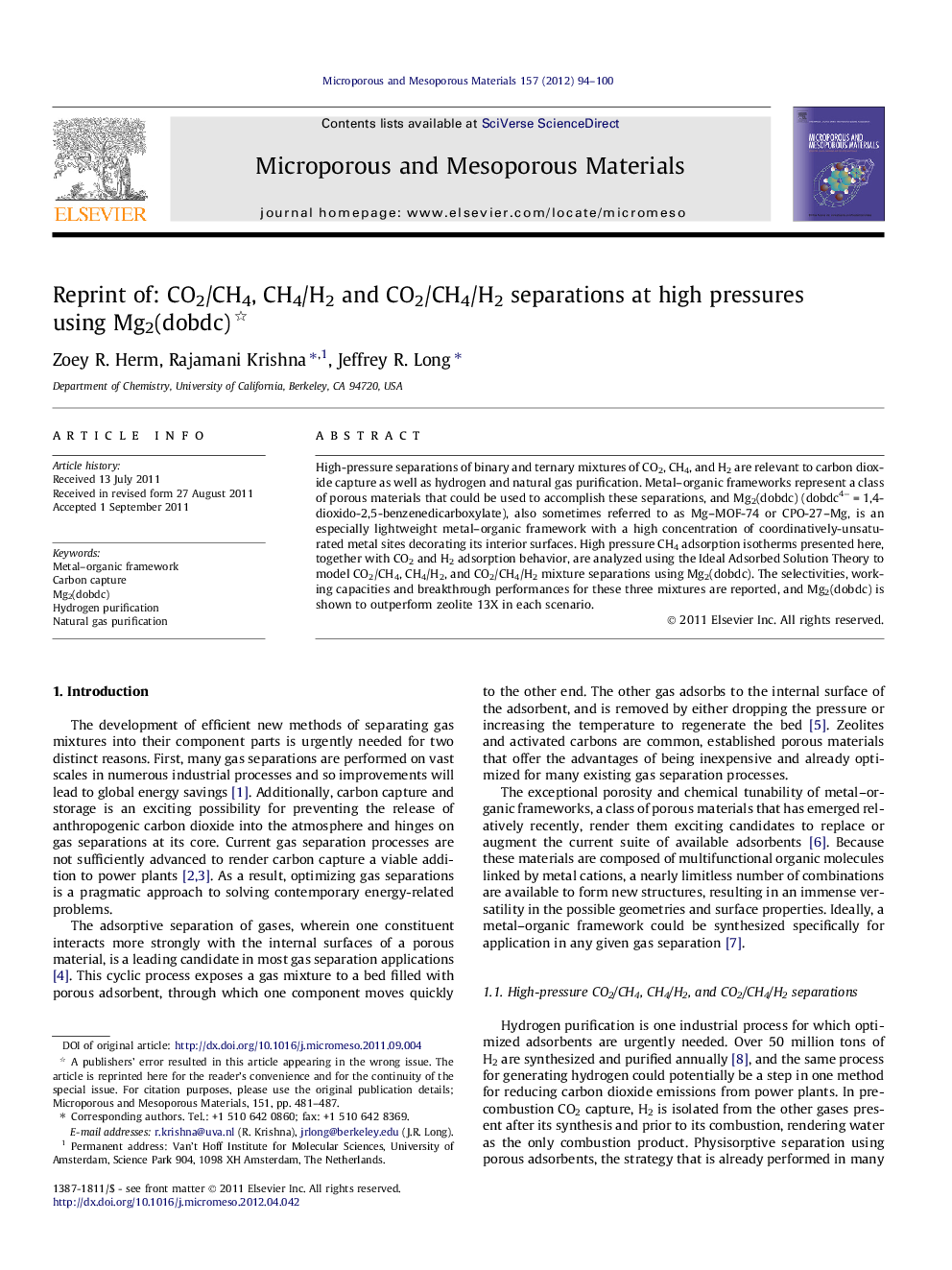| Article ID | Journal | Published Year | Pages | File Type |
|---|---|---|---|---|
| 73958 | Microporous and Mesoporous Materials | 2012 | 7 Pages |
High-pressure separations of binary and ternary mixtures of CO2, CH4, and H2 are relevant to carbon dioxide capture as well as hydrogen and natural gas purification. Metal–organic frameworks represent a class of porous materials that could be used to accomplish these separations, and Mg2(dobdc) (dobdc4− = 1,4-dioxido-2,5-benzenedicarboxylate), also sometimes referred to as Mg–MOF-74 or CPO-27–Mg, is an especially lightweight metal–organic framework with a high concentration of coordinatively-unsaturated metal sites decorating its interior surfaces. High pressure CH4 adsorption isotherms presented here, together with CO2 and H2 adsorption behavior, are analyzed using the Ideal Adsorbed Solution Theory to model CO2/CH4, CH4/H2, and CO2/CH4/H2 mixture separations using Mg2(dobdc). The selectivities, working capacities and breakthrough performances for these three mixtures are reported, and Mg2(dobdc) is shown to outperform zeolite 13X in each scenario.
Graphical abstractFigure optionsDownload full-size imageDownload as PowerPoint slideHighlights► High- and low-pressure CH4 and low-pressure CO2 adsorption onto Mg2(dobdc) are reported. ► CO2/CH4/H2, CH4/H2 and CO2/CH4 mixture adsorption is simulated. ► These results are compared to zeolite 13X. ► Mg2(dobdc) is shown to outperform zeolite 13X in these important gas separations.
